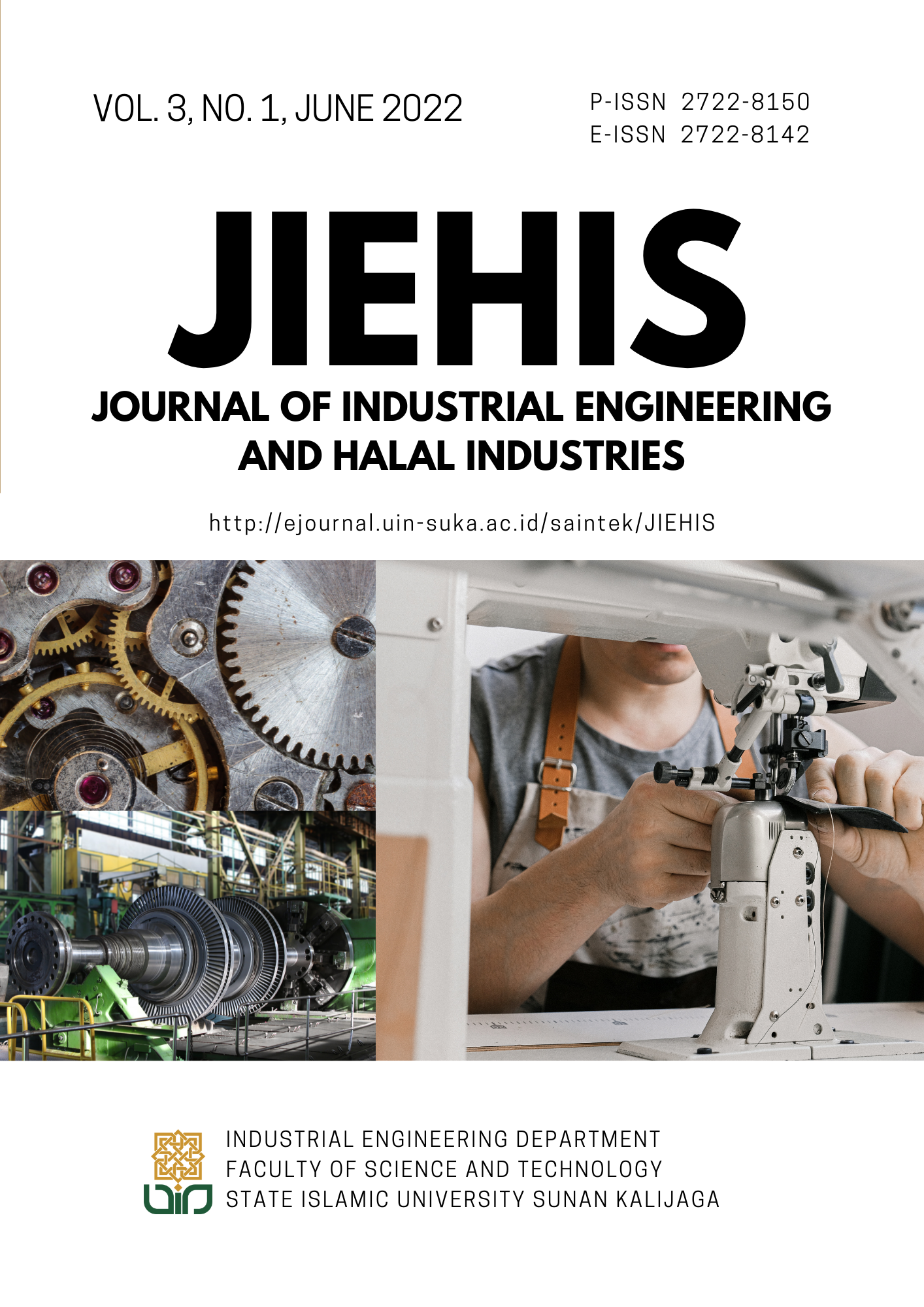THE INFLUENCE OF WORK SAFETY CULTURE AND WORK SAFETY MONITORING SYSTEM ON WORK SAFETY
DOI:
https://doi.org/10.14421/jiehis.3486Keywords:
construction, safety culture, work safety monitoring system, structural equation modelingAbstract
In building construction, there are many things that must be considered, one of which is work safety due to construction industry is a highly hazardous environment. Early signs of an organization's commitment to safety policies are manifested in the safety culture of the organization. Improving contractor safety culture can reduce work accidents on construction industry projects. It is unclear how to improve safety culture among construction industries, practically. The purpose of this study was to analyze the influence of safety culture and its association with management commitment in monitoring system of work safety. Structural Equation Modeling (SEM) method was used by researchers in testing the relationship between the measured variables and the latent construct. According to the results of this study, it can be concluded that Work Safety Culture (X1) has an influence on Work Safety (Y) based on the t-value of 2.721 ≥ 1.64, Work Safety Culture (X1) has an influence on the Work Safety Monitoring System (X2) that verified with a t-value of 3.772, Work Safety Monitoring System (X2) has no effect on Work Safety (Y) based on a t-value of 1.195 < 1.64, and Work Safety Culture (X1) has no influence on Work Safety (Y) through the Work Safety Monitoring System (X2) with a t-value of 0,877. The results of this study can be used as the basis for implementing a safety culture in the company because it is proven to have an important role in work safety so that it is expected to reduce work accidents with the support of management who are committed to consistently carrying out work safety monitoring systems.References
Abdullah, D. N. M. A., & Wern, G. C. M. (2011, December). An analysis of accidents statistics in Malaysian construction sector. InInternational Conference on E-business, Management and Economics(Vol. 3, No. 1, pp. 1-4). Honk Kong: IACSIT Press.
Baram, M., & Schoebel, M.(2007). Safety culture and behavioral change at the workplace.
Bluff, L. (2011). Something to Think About–Motivations, Attitudes, Perceptions and Skills in Work Health and Safety: A Review of the Literature on Socio-Psychological Factors and Their Influence on Organisations’ and Individuals’ Responses to Regulation.Report prepared for Safe Work Australia, 13-16.
Chinda, T., & Mohamed, S. (2008). Structural equation model of construction safety culture.Engineering, Construction and Architectural Management.
Dingsdag, D., Biggs, H., & Sheahan, V. (2006). Safety culture in the construction industry: changing behaviour through enforcement and education. InClients Driving Innovation: Moving Ideas into Practice: Proceedings of the CRCCI 2nd International Conference(pp. 1-9). CRC for Construction Innovation.
Kanchana, S., Journalof Industrial Engineering and Halal Industries(JIEHIS)P-ISSN 2722-8150Vol. 3No. 1 June 2022E-ISSN 2722-814263
Sivaprakash, P., & Joseph, S. (2015). Studies on labour safety in construction sites.The Scientific World Journal,2015.Kim, H., Kim, K., & Kim, H. (2016). Vision-basedobject-centric safety assessment using fuzzy inference: Monitoring struck-by accidents with moving objects.Journal of Computing in Civil Engineering,30(4), 04015075.
Latief, Y., Machfudiyanto, R. A., Arifuddin, R., Setiawan, R. M. F., & Yogiswara, Y. (2017, July). Study of evaluation OSH management system policy based on safety culture dimensions in construction project. InJournal of Physics: Conference Series(Vol. 877, No. 1, p. 012028). IOP Publishing.
Loosemore, M., Sunindijo, R. Y., Lestari, F., Kusminanti, Y., & Widanarko, B. (2019). Comparing the safety climate of the Indonesian and Australian construction industries: Cultural and institutional relativity in safety research.Engineering, Construction and Architectural Management.
Mohamed, S. (2002). Safety climate in construction site environments.Journal of construction engineering and management,128(5), 375-384.
Musonda, I., Haupt, T., & Smallwood, J. (2009). Client attitude to health and safety-a report on contractor's perceptions.Acta Structilia: Journal for the Physical and Development Sciences,16(2), 69-85.
Nielsen, K. J. (2014). Improving safety culture through the health and safety organization: A case study.Journal of safety research,48, 7-17.
Spencer-Oatey, H., & Franklin, P. (2012). What is culture.A compilation of quotations. GlobalPAD Core Concepts,1, 22.
Tadesse, S., & Israel, D. (2016). Occupational injuries among building construction workers in Addis Ababa, Ethiopia.Journal of Occupational Medicine and Toxicology,11(1), 1-6.
Talabi, B., Edum-Fotwe, F., & Gibb, A. (2015, February). Construction actor safety behaviour: antecedents, current thinking and directions. InProceedings of ARCOM Doctoral Workshop: Health, Safety and Wellbeing(Vol. 11, pp. 9-20).
Wu, C., Wang, F., Zou, P.X.W. and Fang, D. (2016). How safety leadership works among owners, contractors and subcontractors in construction projects. International Journal of Project Management. 789–805. doi:10.1016/J.IJPROMAN.2016.02.013.
Zahoor, H., Chan, A.P.C., Utama, W.P., Gao, R. and Memon, S.A. (2017). Determinants of Safety Climate for Building Projects: SEM-Based Cross-Validation Study. Journal of Construction Engineering and Management. 05017005. doi:10.1061/(ASCE)CO.1943-7862.0001298.
Zhang, P., Li, N., Fang, D. and Wu, H. (2017).Supervisor-Focused Behavior-Based Safety Method for the Construction Industry: Case Study in Hong Kong. Journal of Construction Engineering and Management. 05017009. doi:10.1061/(ASCE)CO.1943-7862.0001294
Zohar, D. (1980). Safety climate in industrial organizations: theoretical and applied implications.Journal of applied psychology,65(1), 96
Downloads
Published
How to Cite
Issue
Section
License
Copyright (c) 2022 Tita Latifah Ahmad, Hanin Fitria, Cikita Berlian Hakim

This work is licensed under a Creative Commons Attribution-ShareAlike 4.0 International License.
(c) The Author(s). This article is distributed under a Creative Commons Attribution-ShareAlike 4.0 International License.






